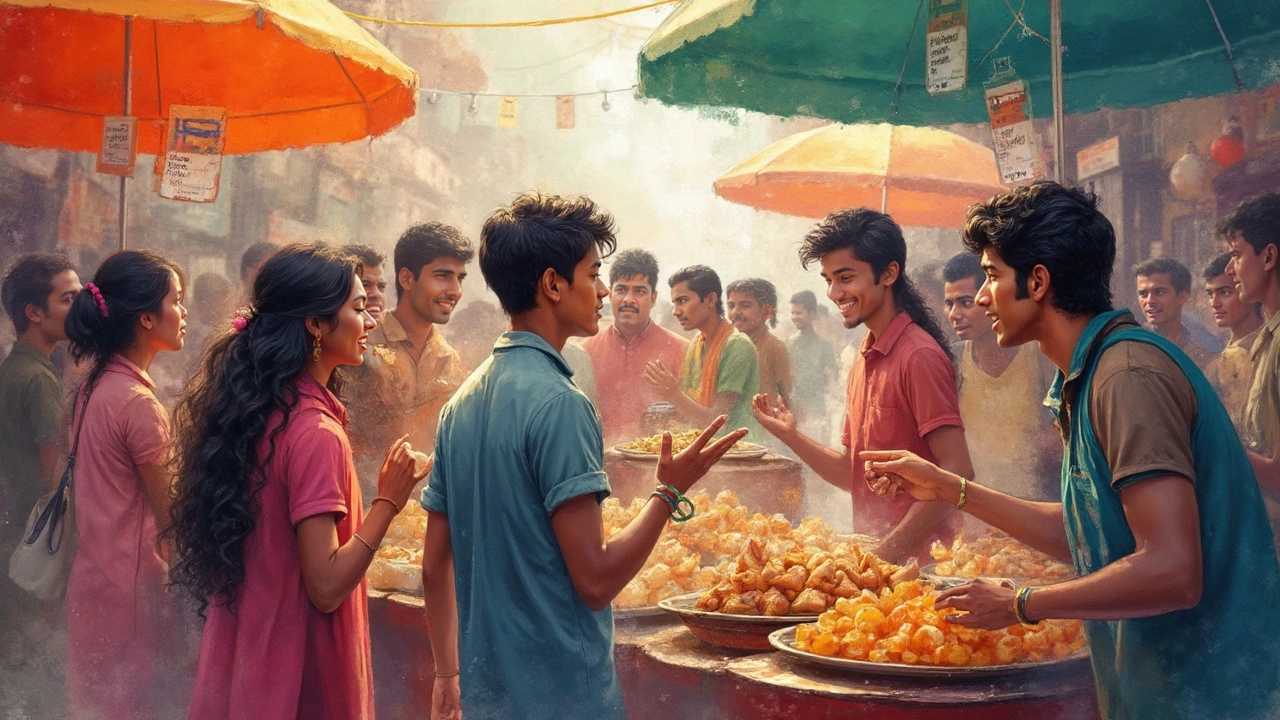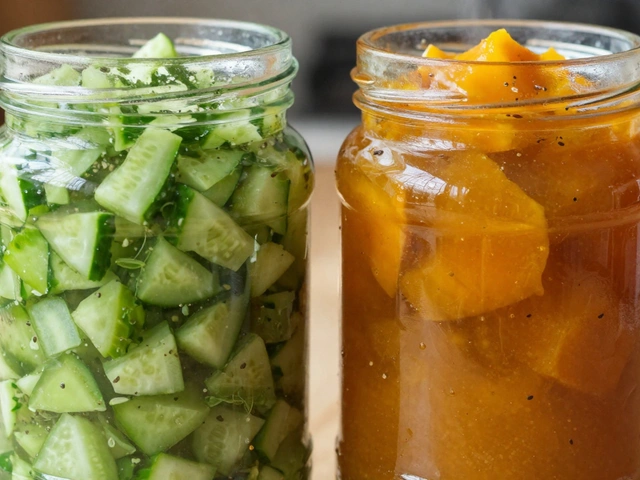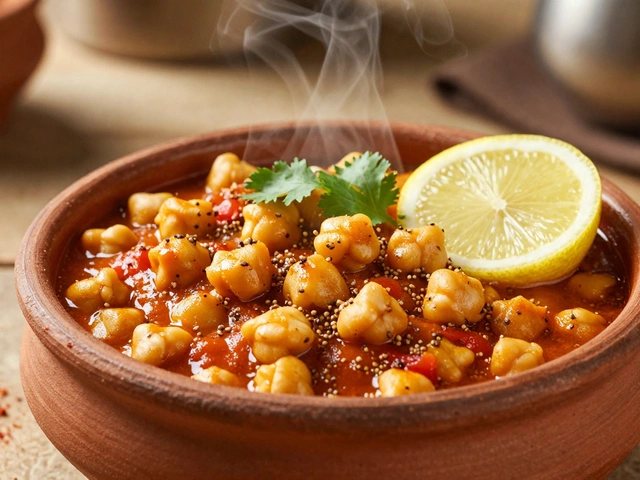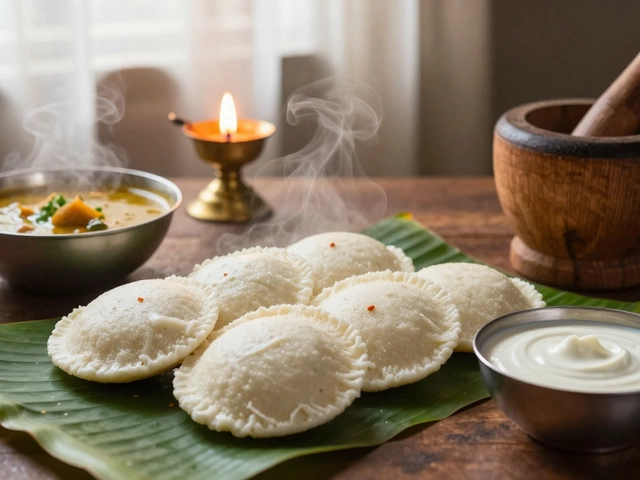Ever found yourself wandering through an Indian street market, with laughter, chaos, and the irresistible aroma of spices dancing in the air? It’s here you’ll hear the word 'achha' tossed around like a local currency. In India, 'achha' is more than just a nod of agreement; it's the unspoken thread that weaves street-side chats together.
Picture this: you're munching on a spicy samosa, and you nod at the vendor, saying 'achha!' It’s a simple word but carries the magic of connection. Whether you’re agreeing, questioning, or just listening, 'achha' fits right in. Dive into this colorful web of sounds and stories, and discover how language brings Indian street food to life.
- Everyday Use of 'Achha'
- Street Food Conversations
- Regional Variations
- Cultural Significance
- Tips for Tourists
- Street Food Vendor Stories
Everyday Use of 'Achha'
If you've ever strolled through the bustling streets of India, you've likely heard 'achha' echoing through alleyways and markets. In everyday conversations, this word works a bit like a Swiss army knife. It's a go-to expression for saying 'okay', but its charm lies in its versatility.
Depending on the tone, 'achha' can convey curiosity, affirmation, disbelief, or even sarcasm. Imagine you're sharing a spicy street food India dish with a friend. You might savor a bite and say 'achha' as a nod of approval, or perhaps listen to a tale and nod your head with a drawn-out 'achha?', expressing intrigue. So, it's more than just a word—it's a feeling.
Conversations with street vendors often feature this term. If you ask for a chai, the vendor might respond with a quick 'achha' to confirm your order. This shared language brings a sense of community and connection, even if it's just a brief exchange over savory snacks or vibrant goods. It's like verbal seasoning to interactions, flavoring the day with a unique cultural spice.
Interestingly, the tone shifts regionally. In Mumbai, 'achha' might sound different than in Delhi or Kolkata. Whether you’re exploring the vendor-packed lanes of Old Delhi or the vibrant beaches of Goa, understanding 'achha' in context helps bridge any language gaps.
So, next time you find yourself amidst the intoxicating chaos of an Indian street, listen for the rhythmic exchange of 'achha'. It's an invitation to join in, learn a bit of local lingo, and share in the vibrant tapestry of India's street culture.
Street Food Conversations
If you stroll down any bustling Indian street, you'll quickly notice that street food isn't just about eating—it's a full-on experience. The craftsmanship behind a perfectly rolled paratha or a piping hot plate of pav bhaji often comes with a friendly chat. And here, you'll find 'achha' as a conversational staple, playing a key role in these exchanges.
Imagine you’re at a food stall, waiting for your crispy dosas. The vendor flips them with ease, and you ask, “Achha, masala kitna milega?” (Indian slang alert—you're basically asking how much masala goes in). The vendor might respond with a smile, “Achha, thoda zyada chahiye toh batao.” It's a form of interaction that’s both familiar and incredibly inviting, even if you're a tourist.
In Indian street talk, phrases like these pepper conversations, ensuring you’re not just a customer, but an honorary participant in the daily hustle. This informal exchange makes street food so much more than a meal. It’s an education in local flavors and dialects, wrapped in a dosa.
Here are a few handy pointers if you're new and want to fit right in:
- Listen for context—'achha' can mean okay, I see, or even express surprise.
- Use it when trying something new. Something like, "Achha, what's that spice?" can kick off a great dialogue.
- Don't worry about making mistakes. Vendors appreciate the effort and warmth 'achha' adds to simple queries.
The bustling energy of street food India is felt in every bite and every word. So next time you’re at a chaat corner, throw in some 'Achha' and watch the magic of street food conversations unfold.
Regional Variations
In India, language isn't just about words; it's a lively dance of sound and meaning, often changing from one state to another. The word 'achha,' commonly used for 'okay,' takes on different flavors as you move through the country's diverse regions. Each area spices up this simple slang to match its own rhythm and culture.
Up North, in places like Delhi and Punjab, you'll hear 'achha' being used with a casual nod. It’s a part of everyday street talk, especially while grabbing a quick bite at a roadside dhaba. In contrast, travel down South and the word morphs. In Tamil Nadu, you might hear 'seri,' which serves the same purpose as an informal 'okay.'
Head towards Maharashtra, and you'll notice 'achha' paired frequently with gestures, adding life to the local chatter. The Marathi influence subtly transforms it into 'ho' in some contexts, translating to an enthusiastic 'yes' or 'okay.' Down in Kerala, you might hear 'sheri,' a term used in similar situations.
These variations aren't just about words— they're like secret ingredients that enhance local interactions. Understanding these can turn even a short conversation over a plate of chatpata pani puri into a memorable experience. Language and street food go hand in hand here, making every bite and every word truly unique.
Remember this: getting the slang right can often mean the difference between feeling lost in the chatter and being part of the vibrant street food culture. So, next time you're out enjoying some Indian street food, try catching these regional twists. It’s a fun way to connect with the locals while savoring the delightful street food India has to offer.
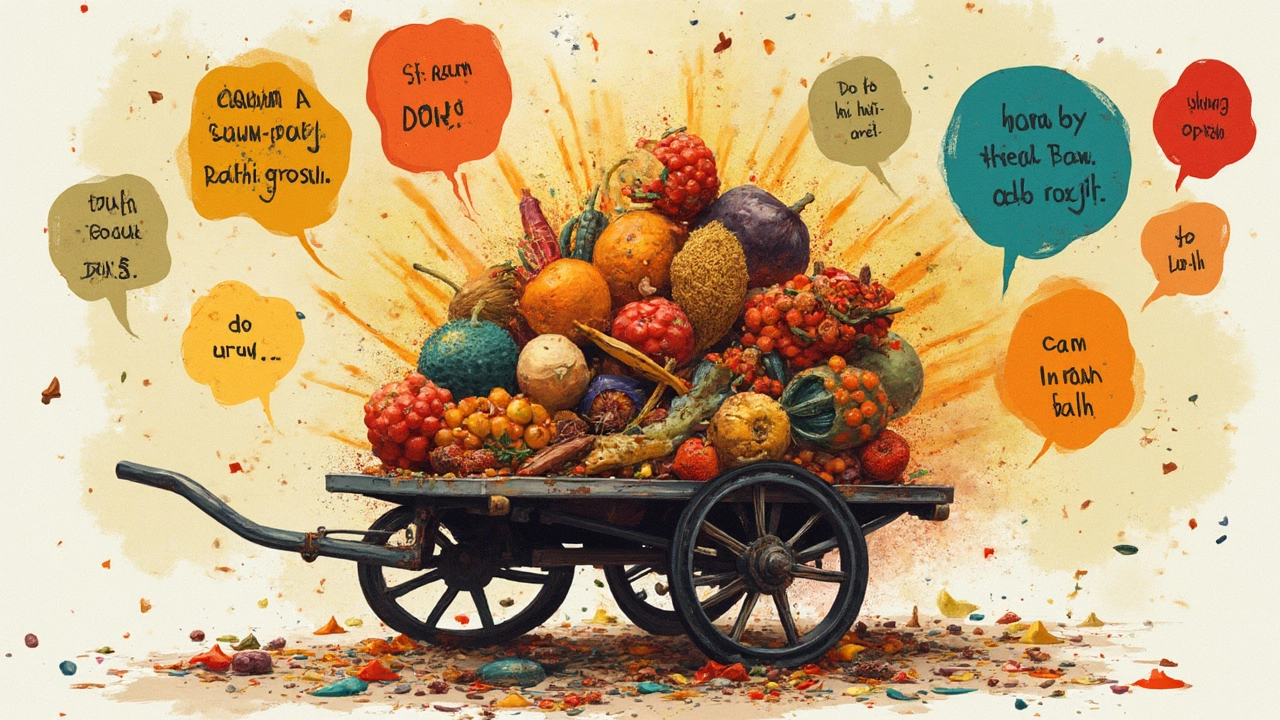
Cultural Significance
The Indian street food scene isn’t just about the snacks, it's a tapestry of culture. And you know what's fascinating? The way a simple word like 'achha' can reveal so much about the vibrant Indian spirit. Sitting at those busy stalls, it's hard to miss the lively exchanges. Vendors and customers throw around this word with ease, revealing its role as a cultural glue.
The beauty of languages in India, including slang, is that they reflect the diversity and unity of a society with countless dialects and traditions. 'Achha' serves as a perfect example. It's an adaptable word that fits into various regions, connecting people from different backgrounds over a shared love for Indian street food.
Moreover, food itself is a cultural bridge in India. Buying a plate of pani puri or a spicy pav bhaji isn't just a transaction; it's an experience rich with history and tradition. Street food vendors are often viewed as storytellers, passing down generations of culinary knowledge, all the while weaving authentic stories through food.
A small stall is much more than meets the eye; it's an arena of dialogues that display the ingenuity of Indian slang. You’ll notice that buzzwords like 'achha' shape not just sentences, but experiences that are uniquely Indian.
Tips for Tourists
Traveling to India can be a bit overwhelming, especially when diving into the vibrant street food scene. But don't worry, these tips will have you munching like a local in no time.
First off, get comfortable with the word 'achha'. It's an Indian slang staple for 'okay', and you'll hear it everywhere. It's your go-to word for agreeing, acknowledging, or just filling gaps in conversation.
When strolling through bustling markets, pay attention to where the locals are eating. If there's a crowd gathered around a vendor, it's usually a sign the food is top-notch—and safe. Remember, fresh is best! Food that's been sitting out too long can be a gamble.
Hydration is key, so drink plenty of bottled water. Spicy snacks can catch you off guard! While you’re snacking, embrace the art of haggling. It's all part of the experience, and using 'achha' can help smooth out negotiations.
- Learn basic phrases: Besides 'achha', pick up other common phrases to make your experience richer.
- Watch how it’s made: Some of the fun comes from watching vendors whip up delicious treats right in front of you.
- Be sanitary: Hand sanitizers and tissues are your best friends while sampling street foods.
Lastly, try everything once. India is a feast for the senses, and tasting your way through the streets is an adventure you won't forget. Just remember to keep it simple and enjoy every bite!
Street Food Vendor Stories
Wandering through the bustling lanes of Indian cities, you quickly realize that street food vendors are the heart and soul of the local culinary scene. These vendors do more than just sell food; they create small islands of flavor and culture right on the roadside.
Take the story of Ramesh, a beloved vendor in Old Delhi. Known for his spicy chaat, Ramesh’s cart isn’t just a place to grab a quick snack. It's where locals gather, share stories, and catch up on the latest gossip. Using 'achha' here goes beyond agreeing about the taste; it’s part of the rhythm of conversation between friends and strangers alike.
In Mumbai, the story is similar but with its unique twist. Vendors like Anjali, selling pav bhaji, bring something special to the table—or rather, the cart. Her secret veggie mix might keep you coming back, but it’s the lively banter that seals the deal. Imagine her customer nodding emphatically with 'achha' between mouthfuls, acknowledging the perfect blend of spice and tangy flavors.
Street Food vendors aren’t just foodie wizards; they can also guide newbies through the jargon and customs. Many tourists have cracked a smile of relief as vendors personally taught them when to use local phrases like 'achha' and how to bargain effectively. It's all part of the street food charm.
Remarkably, a small survey highlighted in street food India hotspots showed that vendors who engage with lively chatter, including using terms like 'achha', enjoyed about 20% higher customer satisfaction. It's not just about the food; it’s the giggles, the nods, and those little 'achha' affirmations that make dining street-side feel like home.
